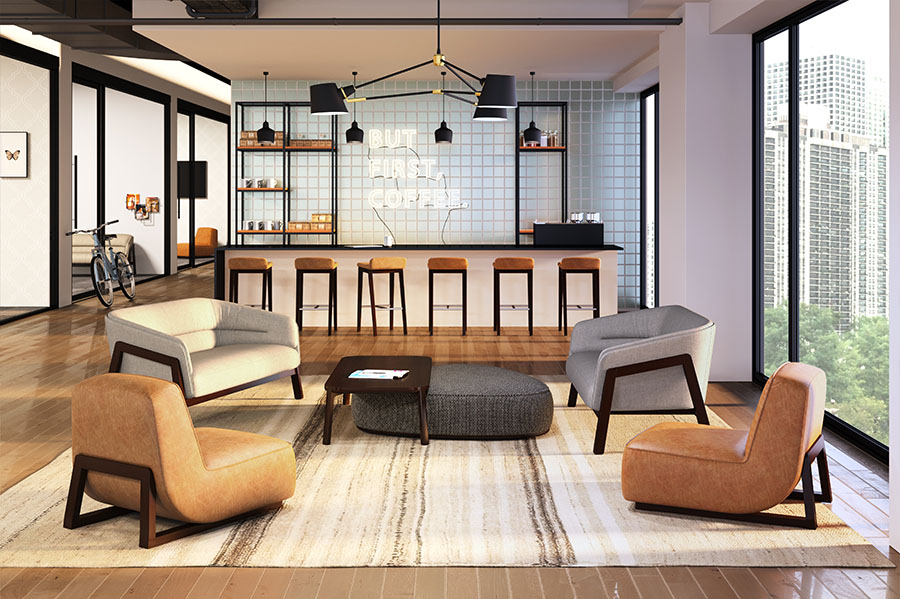In today’s fast-paced work environment, coworking spaces have become a hub for innovation, collaboration, and creativity. As the demand for flexible workspaces continues to rise, it becomes essential for owners and managers to create an environment that inspires and nurtures creativity. That is why “resimercial” design has skyrocketed in popularity in recently.
The Rise of Resimercial Design in the Post-COVID Era
The pandemic forced many professionals to reevaluate their work environments. As remote work became widespread, people began to crave the human connection and collaborative spirit that traditional office spaces provided. Resimercial design emerged as a compelling solution that sought to bridge the gap between the comfort of home and the functionality of the workplace.
More companies are bringing elements of residential design into their commercial office spaces, embracing a hybrid, resimercial approach to lure employees back to the office.
What is Resimercial Design?
Resimercial design is a design philosophy that combines elements of residential and commercial design to create a workspace that seamlessly blends comfort and functionality. It merges the warmth, coziness, and familiarity of residential settings with the efficiency, technology, and professionalism of commercial spaces. By incorporating soft lighting, natural materials, comfortable furniture, and homelike aesthetics, resimercial design aims to create an inviting and inspiring atmosphere.

Creating a Comfortable and Engaging Environment
One of the key factors in fostering creativity is providing a comfortable and engaging environment. When people feel at ease, they are more likely to open up, think outside the box, and explore new ideas. Resimercial design achieves this by incorporating cozy lounge areas, comfortable seating, and inviting communal spaces. Soft lighting and warm color palettes contribute to a relaxed ambiance that stimulates creative thinking.
Blurring the Lines Between Work and Life
Resimercial design recognizes that the boundary between work and personal life is becoming increasingly blurred. By incorporating residential-inspired elements, such as kitchenettes, communal dining areas, and cozy nooks, coworking spaces can create an environment that feels like a second home. This blurring of boundaries helps to foster a sense of community, encourages social interactions, and enhances the overall well-being of the members. When people feel connected and supported, they are more likely to share ideas, collaborate, and innovate.
Inspiring Collaboration and Interaction
Collaboration is a driving force behind innovation and creativity. Resimercial design encourages interaction and collaboration by creating flexible spaces that promote teamwork. Open-plan layouts, shared workstations, and versatile furniture arrangements allow for easy communication and collaboration among coworkers. Additionally, incorporating technology seamlessly into the design enables effortless information sharing and collaborative work sessions.
Unleashing Creativity Through Nature and Biophilic Elements
Biophilic design, which integrates natural elements into the workspace, has been proven to enhance creativity, productivity, and overall well-being. Resimercial design embraces biophilic principles by incorporating elements such as greenery, natural light, and organic textures. Biophilic design has a profound impact on individuals’ cognitive function, reducing stress and increasing focus, ultimately fostering a more creative and innovative mindset.

The logic behind resimercial design is that comfortable employees are happier and significantly more productive and creative.
Embracing the resimercial design philosophy can unlock the full potential of coworking offices to revolutionize the way we work, by fostering a creative and collaborative atmosphere that benefits both individuals and businesses. By blending the comfort and familiarity of residential design with the functionality of commercial spaces, resimercial design helps create an environment that inspires, motivates, and nurtures creativity.









What do you think?